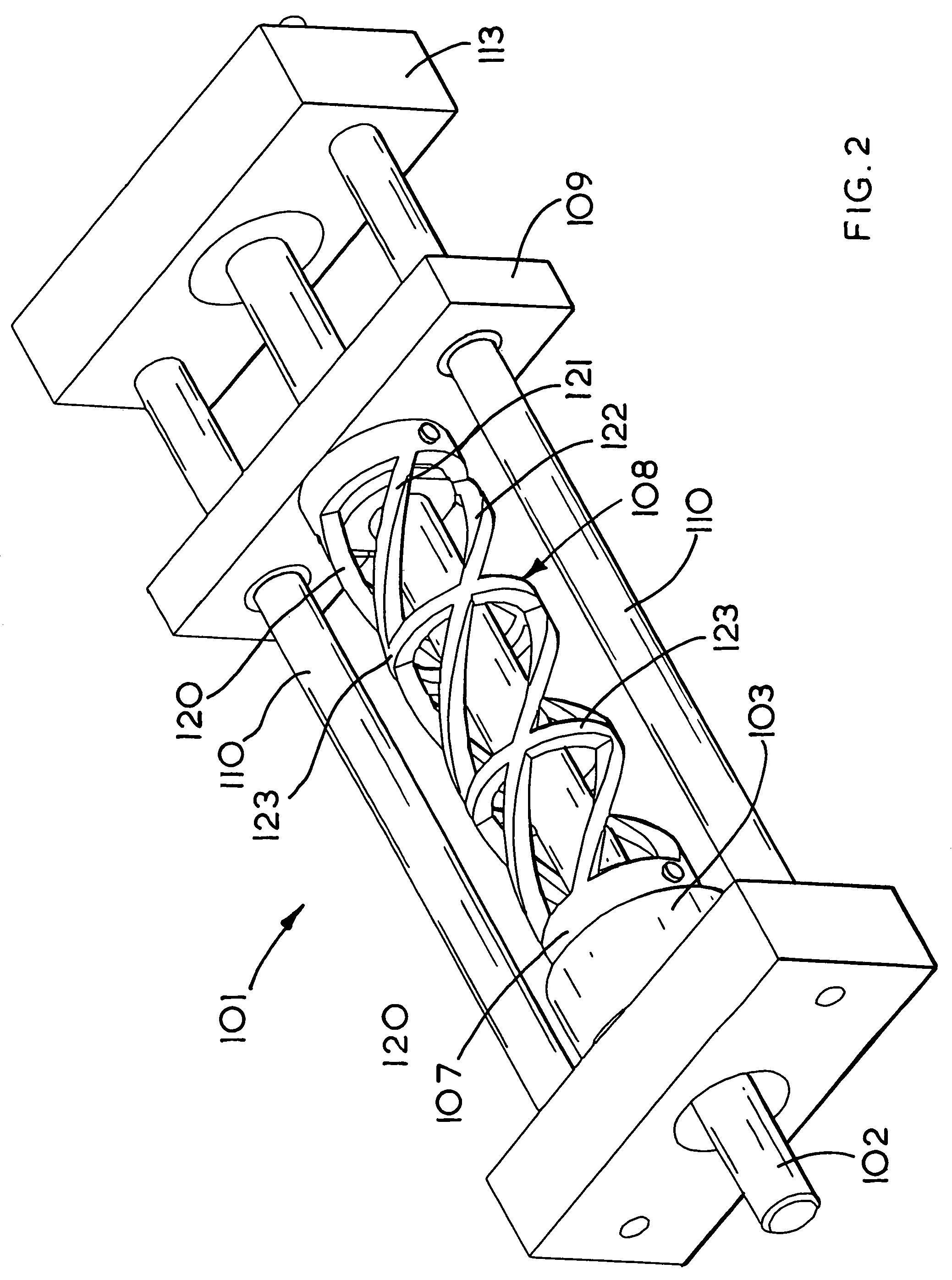Apparatus for producing self-exciting hammer action, and rotary power tool incorporating such apparatus
- Summary
- Abstract
- Description
- Claims
- Application Information
AI Technical Summary
Benefits of technology
Problems solved by technology
Method used
Image
Examples
second embodiment
[0042]Referring now to FIGS. 2 to 4, in which parts common to the embodiment of FIG. 1 are denoted by like reference numerals but increased by 100, a hammer drill 101 of the invention has a first mass 107 connected to a second mass 109 by means of a helical spring 108 including three individual helices 120, 121, 122 which are connected together by means of a series of rings 123. The spring 108 of the embodiment of FIGS. 2 to 4 has the advantage of minimising radial expansion of the spring 108 as it acquires twist, which may otherwise reduce the extent to which the spring 108 converts rotary movement of first mass 107 into axial movement of second mass 109.
third embodiment
[0043]Referring to FIGS. 5 and 6, in which parts common to the embodiment of FIG. 1 are denoted by like reference numerals but increased by 200, a hammer drill 201 of the invention has a working shaft 202 comprising a rear part 202a fixed relative to integral gear 203 and motor (not shown), and a front part 202b which is axially slidable to a limited extent relative to the rear part 202a. As shown in greater detail in FIG. 6, which is an enlarged schematic view of region A in FIG. 5, the rear part 202a and front part 202b are connected to each other by means of a generally frustoconical projection 230 on rear part 202a (shown in dotted lines in FIG. 6), which is received in a correspondingly shaped recess in the front part 202b. The front and rear parts 202a, 202b are splined, i.e. provided with ridges and grooves 231 so that when the front part 202b is in mating contact with the rear part 202a, rotation of the rear part causes corresponding rotation of the front part.
[0044]In the t...
PUM
| Property | Measurement | Unit |
|---|---|---|
| Angle | aaaaa | aaaaa |
| Mass | aaaaa | aaaaa |
| Distance | aaaaa | aaaaa |
Abstract
Description
Claims
Application Information
 Login to View More
Login to View More - R&D
- Intellectual Property
- Life Sciences
- Materials
- Tech Scout
- Unparalleled Data Quality
- Higher Quality Content
- 60% Fewer Hallucinations
Browse by: Latest US Patents, China's latest patents, Technical Efficacy Thesaurus, Application Domain, Technology Topic, Popular Technical Reports.
© 2025 PatSnap. All rights reserved.Legal|Privacy policy|Modern Slavery Act Transparency Statement|Sitemap|About US| Contact US: help@patsnap.com



